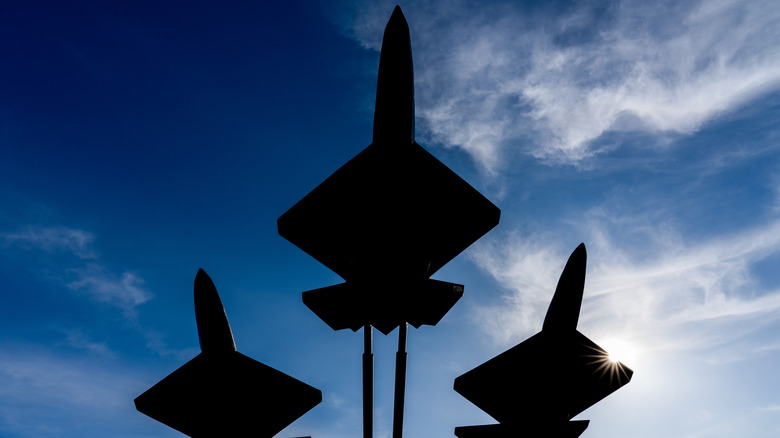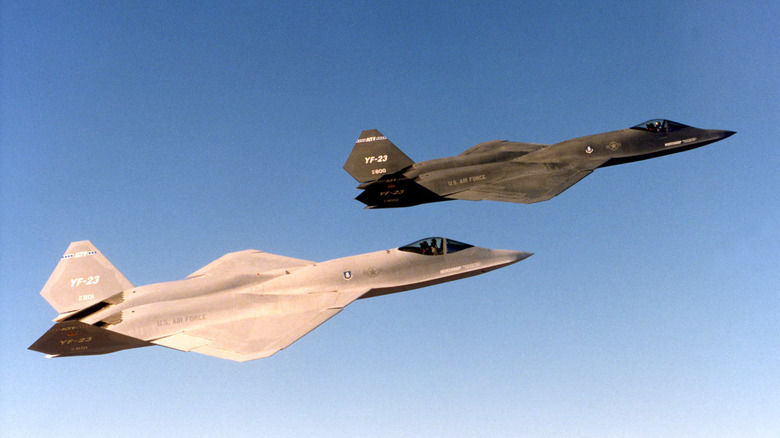What Happened To The YF-23 Fighter Jet
Built by Northrop and McDonnell Douglas for the Air Force's Advanced Tactical Fighter (ATF) program in the late 1980s, the YF-23 Black Widow II was a fifth-generation fighter jet that ticked all the right boxes: stealth, speed, supercruise, altitude, and futuristic design. Two prototypes were built known as Prototype Air Vehicle 1 (PAV-1), or "Black Widow II," with Pratt & Whitney YF119 engines (which many fighter jets use), and PAV-2, referred to as "Gray Ghost," with General Electric YF120s. Both were stealthier and had a longer range than their main rival, the Lockheed YF-22.
But when it came to dogfighting, the YF-22, which would go on to become the F-22 Raptor, had the edge. Its thrust vectoring gave it better low-speed agility, and the Air Force prioritized maneuverability for close-range combat. That alone was enough to tip the scales. On April 23, 1991, the YF-22 won the contract. Lockheed's proposal was also seen as lower-risk, and the USAF believed Lockheed had the stronger team to manage costs and deadlines. Despite impressive test flights and unmatched stealth, the YF-23 was outmaneuvered on paper and in flight.
The prototypes were parked, then shelved
Despite a few early issues, like cracked windscreens and a plugged air sense line, both aircraft performed well. In just over 90 days, the YF-23 completed dozens of supersonic flights, hitting Mach 1.8, and flew in formation with a YF-22 for the only time in December 1990. It checked every technical box the Air Force asked for, but even being a high-performing, futuristic stealth jet wasn't enough when politics and cost favored the other guy. The YF-23 didn't fail. It just lost a close race.
After losing the contract, the two YF-23 prototypes were put in storage at Edwards Air Force Base. After all government equipment was removed from them, the two PAVs sat idle while the F-22 Raptor (now discontinued) took shape. NASA took possession of both in 1993 for potential structural testing, but no funds came through. By the mid-1990s, the YF-23s were offered to museums. PAV-1 was shipped to the National Museum of the U.S. Air Force in Dayton, Ohio. PAV-2 ended up at the Western Museum of Flight in California.
Could it still come back?
There's been recent noise about reviving the YF-23's design. Both the UK and Japan are eyeing sixth-generation fighters, but the high costs and complexity of these advanced aircraft, even with combined funding through the Global Combat Aircraft Program (GCAP), pose serious challenges. The British Ministry of Defense faces serious budgetary hurdles to bring the project to fruition. That's why talk of reviving the old YF-23 design is gaining traction as next-gen fighter jets seem like a far-away dream. The YF-23 would deliver significant capabilities at a fraction of the cost of a brand-new design.
If nothing else, the YF-23 stands as a classic "almost" in military aviation. It wasn't beaten because it was flawed. It was just a case where the winning jet checked one more box. But decades later, the jet that didn't make it remains one of the most talked-about U.S. fighter jets that never took to the skies.


